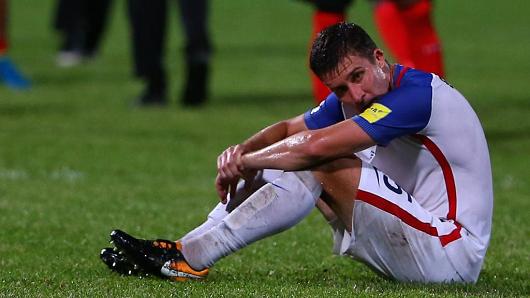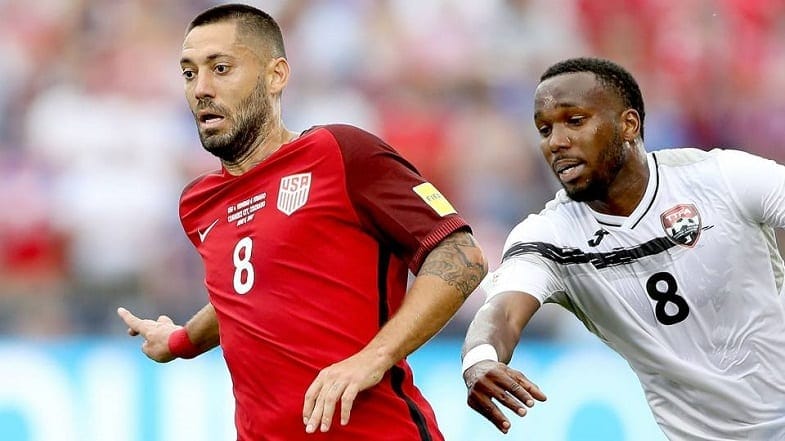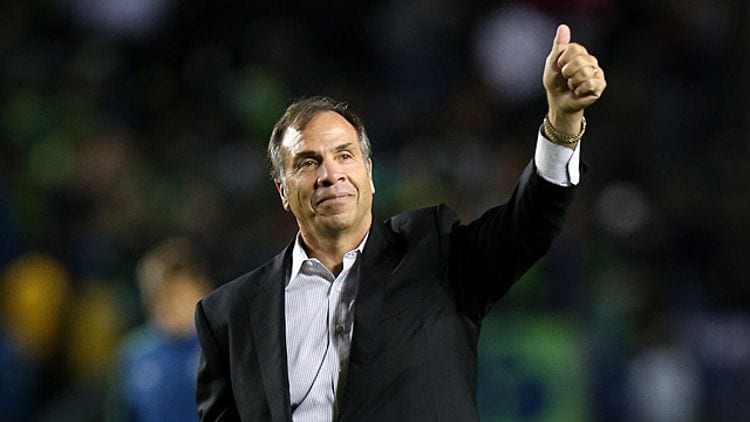
On the night of October 10, in a near-empty stadium on the western shores of Trinidad, a long-overdue wake-up call was delivered to American soccer administrators. It came in the form of a 2-1 defeat by the US Men’s National Team to Trinidad and Tobago, a fateful result which confirmed, for the first time since 1986, the United States will not take part in the FIFA World Cup.
Heading into the match in Couva, the US was on the brink of booking their ticket to Russia. A draw against the CONCACAF cellar dwellers was all that was needed to seal a berth to an eighth consecutive World Cup. But everything that possibly could go wrong did. It happened across three simultaneous matches, with Honduras stunning Mexico, Panama surprising Costa Rica, scoring a winning goal that failed to cross the line and, of course, the fiasco in Cuava.
That allowed Panama and Honduras to leapfrog the US in the standings, and prompted a hasty autopsy of the US’s doomed qualifying campaign.
Ignoring a concerning cycle
Following the defeat, as he was being pressed on the need for upheaval, US Soccer Federation president Sunil Gulati said: “You don’t make wholesale changes based on the ball being two inches wide or two inches in.”
Gulati’s comments were in reference to Clinton Dempsey’s attempt on goal striking the post late in the Trinidad game. Had the shot gone in, the match would have more than likely ended in a draw and the US’s place in Russia would be confirmed. Pointedly, through his focus on the events of the game, Gulati highlighted the tendency of US soccer officials to ignore key warnings about the state of the sport in their country.
Prior to his uninspiring reply, Gulati would have been aware of the US men’s teams’ failings across every age group for close to seven years. He must have known that since 2011 the US men’s teams have failed to qualify for major tournaments at Under-17, Under-20 and Under-23 level. Surely, Gulati, in office since 2006, would have realized that the wins had dried up for the men’s senior team in recent years. This despite the US playing the majority of their matches against teams from CONCACAF, which behind Oceania ranks as the easiest region from which to qualify for the World Cup.

Cuava was merely the final leg of a long list of failings which were only placed under the microscope once the ignominy of failing to qualify for a World Cup was confirmed. To dismiss it as being the result of the ball bouncing a couple of inches in one direction as opposed to the other merely pinpoints the distorted picture of progress US soccer administrators have been painting.
In Gulati’s defense, it is tempting to highlight the upside of US soccer when faced with aggressive calls for change. The women’s team are the reigning World Cup champions. Major League Soccer, the burgeoning domestic competition, boasts a bevy of international stars and is quickly expanding. The country also boasts a gigantic youth system with healthy participation rates.
Yet, in spite of all of this cause for optimism, the fact remains the same: this rich and populous nation failed to make it out of their CONCACAF qualifying group. Such a reality should redefine everything Gulati and his fellow administrators thought they knew about the sport.
Finding a fix
If, and hopefully when, Gulati and co. determine there is a problem to address, attention must immediately turn to what is wrong across the board. A close examination of youth development in the country would be a good first step.
Christian Pulisic, the 19-year-old Borussia Dortmund star who was the sole shining light for the US during their tepid qualifying campaign, was partly a home-grown product, yet he left for Europe in his teens. His development wasn’t the result of a systemic production of word-class American talents, something that is sorely lacking. Put simply, Pulisic is an anomaly.
The shortage of world-class talent coming out of the youth ranks could be the result of soccer administrators not making the sport accessible enough. Even with the high participation rates, the American system of cultivating talent is plagued by class restrictions. Research highlights that upper-middle class families are producing 35 percent of youth soccer players in the country, while low income ones manage just 13 percent. With the costs of covering standardized training running too high for many American families, soccer is systematically excluding a large portion of the population – a recipe for failure.

Beyond the mistakes at youth level, the underlying causes of this debacle also extend to poor decision making on the senior set up by the powers that be. Re-signing Jurgen Klinsmann, under whom the failed qualifying campaign began, followed by Bruce Arena, who promptly resigned after the October 10th defeat, proved fatal. Both coaches relied too heavily on veteran talent throughout the campaign, missing the opportunity to blood youth in what ultimately proved a developmental phase.
Rather than blaming bad breaks, Gulati and his administration need to acknowledge failings and conduct a thorough search for more of them. It’s the only way a much-needed revamp, from the grassroots level all the way to the Men’s National Team, will set soccer in the United States back onto the right path.

The greatest NBA dynasties of all time
The goal for any basketball franchise is to build a dynasty that fans and experts will be talking about for











